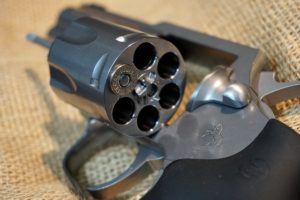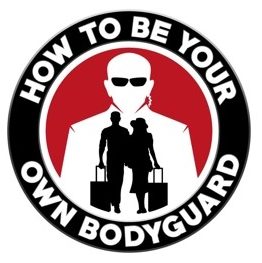TAP, RACK, BANG, OR NOT
For those unfamiliar with shooting, I apologize in advance. For your edification, almost every reputable shooting school worldwide teaches a drill to address weapon malfunctions. It’s commonly known as the Tap, Rack, Bang drill. (The link will take you to a video clip of it being done.) I have never heard it called anything else, and if anyone has, I’d love to hear it. This blog entry is about why it might just be one of the most dangerous things taught on ranges around the world. (Google shows 704,000 results in under half a second when you start typing “tap, rack…without even adding the rest.)
WHAT IS IT?
For the uninitiated, you’re shooting a pistol (not a revolver, which looks like what cowboys used to shoot), and all of a sudden, it doesn’t work when you pull the trigger. There can be many reasons for this. For instance, the magazine can have a feed problem; the magazine might not be seated properly; you can have a dud round; the wrong ammunition; a limp wrist; a stovepipe (so-called because the empty casing is caught before it ejects completely and sticks out of the gun like a tiny chimney)

TAP
The solution is to slam the palm of your non-dominant hand, i.e., the one not wrapped around the grip, into the base of the magazine. This will seat it if that’s the problem.
RACK
After that, you rack the slide of the weapon. (Grab it and pull it back like you’re trying to tear it off the top of the weapon.) If there wasn’t a round in there (you took the gun off a bad guy during a weapon disarm, for example, and he hadn’t put one in the chamber), that will load one. If the one in there was a dud, this will extract it and load a new one. Maybe the weapon fired during your struggle for it, but the slide was impeded. Again, you’re going to have to rack the slide to extract the old and put in the new. If there’s a stovepipe, this will also take care of it. In conclusion, whatever the problem was, the “tap rack” sequence will take care of it.
BANG
Now you’re supposed to pull the trigger, hence the bang.
WHY IT’S DANGEROUS
When I first learned the drill, it was on a bodyguard course. So, we’re making the assumption that, in the middle of a gunfight, my weapon malfunctions. I need to get it back working as fast as humanly possible. So, “Tap, Rack, Bang.” The next time I learned, it was for competing. The gun jams, which slows you down, so to get back in the competition ASAP, similarly, “Tap, Rack and Bang.” When I’m on a range shooting, and I have a malfunction, again, I want to get back to shooting, so “Tap, Rack, Bang.”
So, where’s the problem? Well, I teach gun disarming. Robbery at gunpoint is the highest probability crime around where I live. In addition, I teach practical self-defense, not classical martial arts. We teach if you’re able to wrestle the gun from the bad guy immediately, as you’re disengaging, to Tap and Rack. Maybe the gun he was holding on you didn’t have a round in the chamber. Maybe the magazine partially dislodged while fighting over it. Easy to press the mag release button while squeezing the gun in a death grip. Also, it’s highly probable that if there was a round in the chamber, the gun went off during the struggle. You gripping the weapon won’t stop that from happening, however, it will stop the slide from extracting the spent round. Again, pretty much anything that could screw with the weapon working can be fixed on the fly with the Tap and Rack portion of the program.
CONDITIONING
If you’re an avid shooter and you’ve been trained to perform “Tap, Rack, Bang,” can you guess what your next action will most likely be? Yep, pull the trigger, aka “Bang.” Therefore, if the bad guy is surrendering or running away while you do that, you could find yourself in a world of legal hurt. You just shot and killed someone who’s no longer a threat. Please don’t try to say, “Well, I wouldn’t in that situation.” The whole purpose of training is to drill responses that work almost on autopilot; otherwise, why train?
TAP, RACK, READY
In conclusion, once I realized this was a problem for my students (after watching one of them, an avid shooter, continually shoot people whether they were surrendering, running away, or fighting back), I switched it to “Tap, Rack, Ready.” Now they’ve inserted the magazine, taken care of misfires, duds, slides not sliding, etc., and have a weapon in battery “ready” to use should it become necessary. You are not in a gunfight like our bodyguard or police example. You’re not on a range competing for time and accuracy. Nor are you on a range shooting. All you’re trying to do is gain control of a situation and hopefully hold the bad guy till the cops get there.
Above all, should it now become necessary to shoot, you’re “ready.” If it’s not a situation requiring you to shoot, i.e., he’s running away or complying with your orders to get on the ground, you haven’t automatically shot him after “tap, rack.”


Tap, Rack, Ready. I like it.
Tap, Rack, Bang is a drill for your OWN gun, while in a gunfight/competition. It’s not a drill based upon disarming an assailant, and making sure their gun is ready to fire. You created a very specific scenario, to justify teaching people to hesitate during an immediate action drill.
Roger, thanks for your feedback. Yes, you’re absolutely right. I did. For exactly the reason I mentioned. I don’t want my students in a self defense situation (which is after all what I’m teaching) to automatically shoot the guy they just disarmed. As mentioned in the post I’ve had a couple of law enforcement and gun aficionados come through my school who’ve done just that under pressure.
I would submit that by sticking with “ready” instead of “bang” you get the best of both worlds. In your case, be it a gun fight or competition with your gun, you still press the trigger when you’re ready to i.e. immediately. In my student’s case they would be ready to if necessary i.e. the bad guy fighting them trying to get the gun back but they wouldn’t if he was running away or capitulating.
PS: As an FYI I got a lot of feedback on the facebook page where I posted the link to the blog from gun guys who said they don’t use that term anymore for exactly that reason.